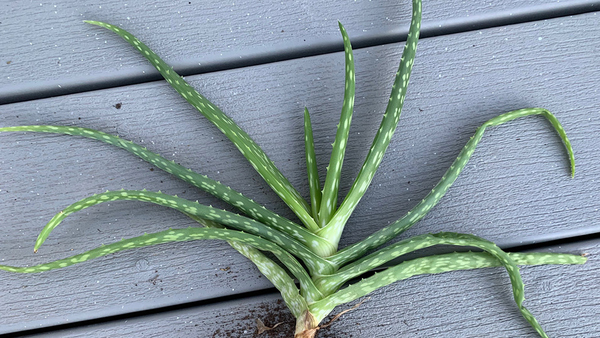
Vertical gardening continues to grow in popularity. Although the concept is not new, it is becoming more relevant than ever for Southern California landscapes. With increasingly hot, dry, and windy weather, we are learning to make the most of our space. And that need is doubled for gardeners with limited property. Vertical growing is nothing more than what it says: growing plants up walls, spreading them across fences, decorating vertical panels, covering exposed and upright areas, or even arranging containers of tall growers—to garden upwards.
Planting up rather than out helps plants and gardeners
With Southern California’s increasing water shortage and intense sunshine, this kind of gardening allows for better irrigation control as well as optimal shade protection for plants that might otherwise burn. Add in all the artistic possibilities for designing plants to grow upward, and we can expand the magic of the plant world all around us—both indoors and out—even with critical watering restrictions.
July is a perfect month to start experimenting with designing formats for vertical growing projects. Much of the designing and construction can be done indoors during the summer heat, while sun-loving plants such as tough succulents can still be planted outdoors. Start now and be all set for more planting in autumn.

Almost every home offers at least one unique space where growing vertically can be an asset. What would work for you? Espaliers? Blocking neighbors? A room divider? A living meditation area or reading space for unwinding and recharging in a stressful world? Here are some vertical-gardening suggestions.
8 ways to use vertical gardening
- Cover a boring wall
- Decorate or fill in fences
- Make walkways inviting with pergolas and arches dressed in vines
- Create lively flowering pockets in stacked-stone or concrete-block walls, or line up containers filled with tall plantings to function as space dividers
- Enliven both indoor and outdoor spaces by creating mobile panels and modular systems on wheels
- Add natural temperature mediation to patios, walls, or other areas with an insulating buffer of leaves and flowers
- Encourage colorful growth in spaces that are ordinarily too small to sustain a flat, horizontal garden
- Make life tastier with a vertical kitchen garden wall for growing fresh herbs, fruits, and vegetables
Watering and placement are easy with a few vertical-gardening tools and strategies
Vertical gardening saves water, since the roots are contained in serviceable areas. Containers can be positioned where they are irrigated from above or from hidden tubes using gravity to deliver water where it is needed. The containability of these decorative gardens makes them ecologically effective and economic.

A whole world of opportunity grows when gardening upward. You can design and build your own vertical garden, or you can build one from a kit. Easy-to-assemble modular kits can be found at garden centers or online in a wide range of styles and pricing. The most common kinds are usually formed with steps or tiered pockets as footings for the plants to grow.
Some kits or designs have stiff frames, while others flexibly drape. Some combine both and are independently hung like a living, framed tapestry. Structures can be made of plastic, fiber, wood, vinyl, or fabric. Customize your own structures by using the basic designs of existing available products, or invent your own. Regardless of the material or design used, when using wall-hung frameworks, it is wise to include an efficient, waterproof lining between the permanent wall and the attached garden so that water cannot seep into the surface of the wall behind your vertical plantings.
Some of the best vertical gardens allow for location flexibility and movement
Imagine a living piece of art you can wheel around to use for temporarily partitioning a room or decorating a patio in a space where nothing would normally grow. When done, roll your mobile plant wall back to a space where it can enjoy the sun or shade it needs. Or picture yourself snapping off a few tasty snow peas or popping a juicy strawberry into your mouth as you pass by your mobile vertical garden.

No matter if your vertical garden is mobile or stationary, it can offer protection for growing plants that might be too exotic to survive otherwise. Cascading flowers, lush green foliage, even edibles will find safe spaces to thrive so long as soil are maintained, watering is controlled, and the sun exposure is right.
If you are interested in a gardening project that will be flexible and fun and that will become a conversation piece, put together a living wall. Gardening up allows us to successfully garden despite water shortages. It adds new dimensions that blend well with today’s aesthetics and ecology. And it is a creative, practical way to put us in control of our gardens during changing times.
—Jane Gates is the author of All the Garden’s a Stage: Choosing the Best Performing Plants for a Sustainable Garden and has more than 40 years of garden design experience in Los Angeles.
Photos: Jane Gates

















Comments
Log in or create an account to post a comment.
Sign up Log in